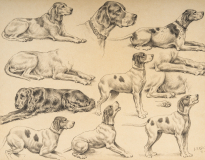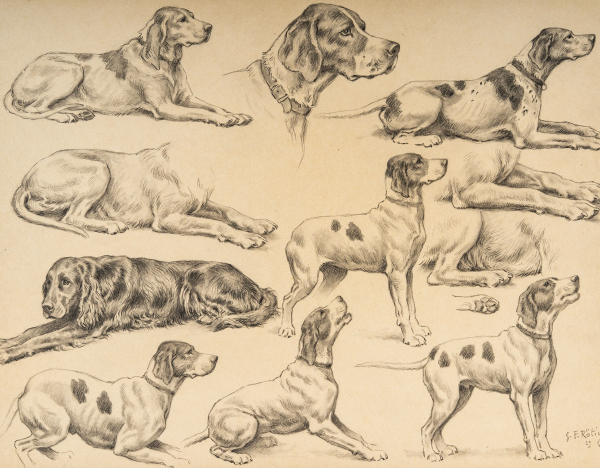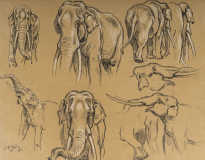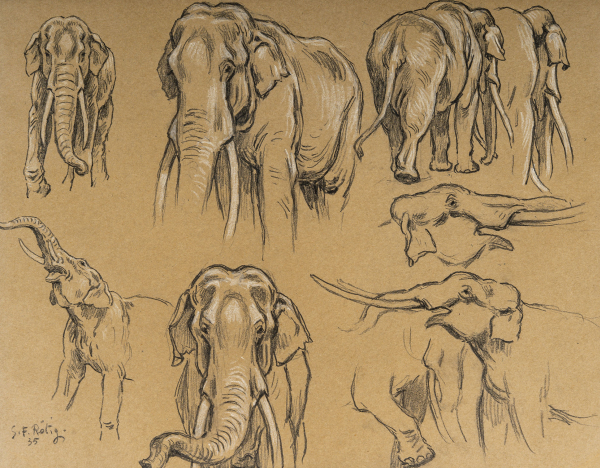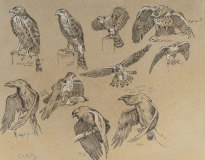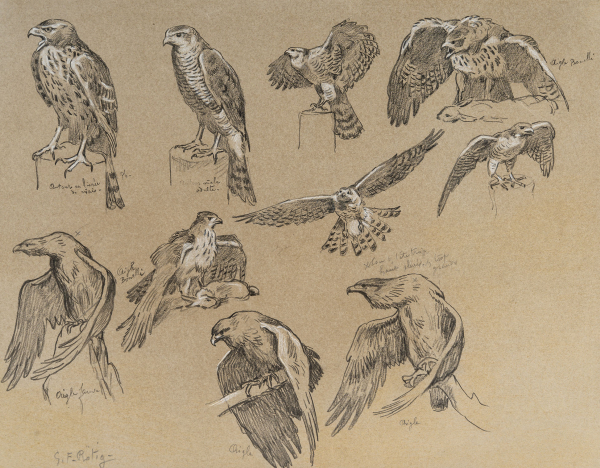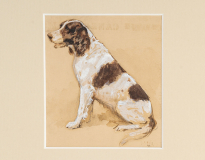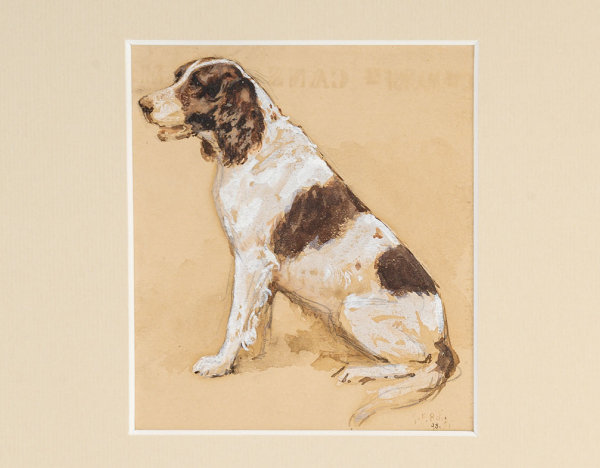Georges-Fréderic Rötig
( 1873-1961 )
Biography
Georges-Frédéric Rötig was a French painter and draughtsman who established himself as a major figure in wildlife art at the turn of the 19th and 20th centuries. Born in Paris in 1873, he developed an early fascination for wild and domestic fauna, which was to become the core of his work. Trained at the École des Beaux-Arts in Paris, he followed the teachings of masters such as Léon Bonnat and Jean-Léon Gérôme, two influential figures of academic realism.
Rötig is particularly renowned for his detailed studies of animals: majestic elephants, impressive birds of prey, expressive hunting dogs. His drawings and paintings, imbued with anatomical precision and an acute sensitivity to animal behavior, reflect a deep understanding of his subjects. Through a variety of media, including drawing, watercolor and sometimes oil, he virtuously captures the musculature, attitudes and energy of each species. He devotes much of his career to observing and depicting animals in their natural environment, often with almost scientific attention.
From 1894, he exhibited regularly at the Salon des artistes français, winning an honorable mention in 1898, a third medal in 1902 and a second medal in 1904. In 1922, Georges-Frédéric Rötig was awarded the prestigious Prix Rosa Bonheur, a distinction created in tribute to the famous 19th-century animal painter. The prize is awarded to artists who continue the legacy of Rosa Bonheur, whose work set new standards in the realistic depiction of animals. This recognition further establishes Rötig's reputation and underlines her role in the continuity of this French artistic tradition.
Today, Rötig's works are appreciated as much for their technical mastery as for their aesthetic and documentary dimension. His works can be found in many private collections and museums, where they continue to fascinate with their authenticity and liveliness.
93400 Saint-Ouen sur Seine
